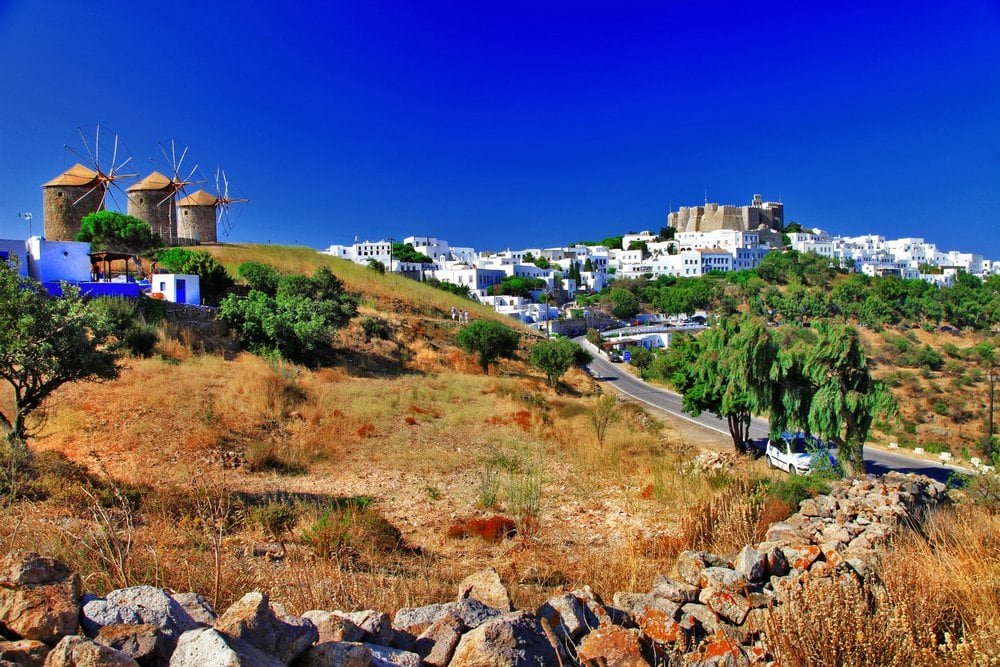
Want to discover why you should visit the island of Patmos in Greece for your next holiday?
Welcome to the timeless allure of the Island of Patmos, a gem nestled in the Aegean Sea.
Known for its historical significance, stunning landscapes, and spiritual resonance, Patmos Island beckons travelers seeking a blend of cultural exploration and natural beauty.
Patmos, a small Greek island measuring just 34 square kilometers, is renowned worldwide for its profound spiritual heritage and captivating scenery.
Situated in the Dodecanese archipelago, Patmos stands as a testament to Greece’s rich history and cultural depth.
Its rugged coastline, pristine beaches, and quaint villages invite visitors to immerse themselves in the island’s charm and tranquility.
The allure of Patmos transcends its physical beauty; it holds a profound spiritual significance as well.
Revered as the island where St. John the Divine received the visions recorded in the Book of Revelation, Patmos draws pilgrims and seekers of divine inspiration from around the globe.
Its Cave of the Apocalypse stands as a testament to this sacred history, offering visitors a glimpse into the spiritual journey of St. John.
Beyond its religious significance, Patmos captivates travelers with its authentic Greek lifestyle, vibrant culture, and warm hospitality.
From exploring ancient monasteries to indulging in traditional cuisine by the sea, every moment on Patmos is infused with a sense of wonder and discovery.
In no particular order, let’s look at the 12 reasons why you should visit the island of Patmos
1. Historical Significance
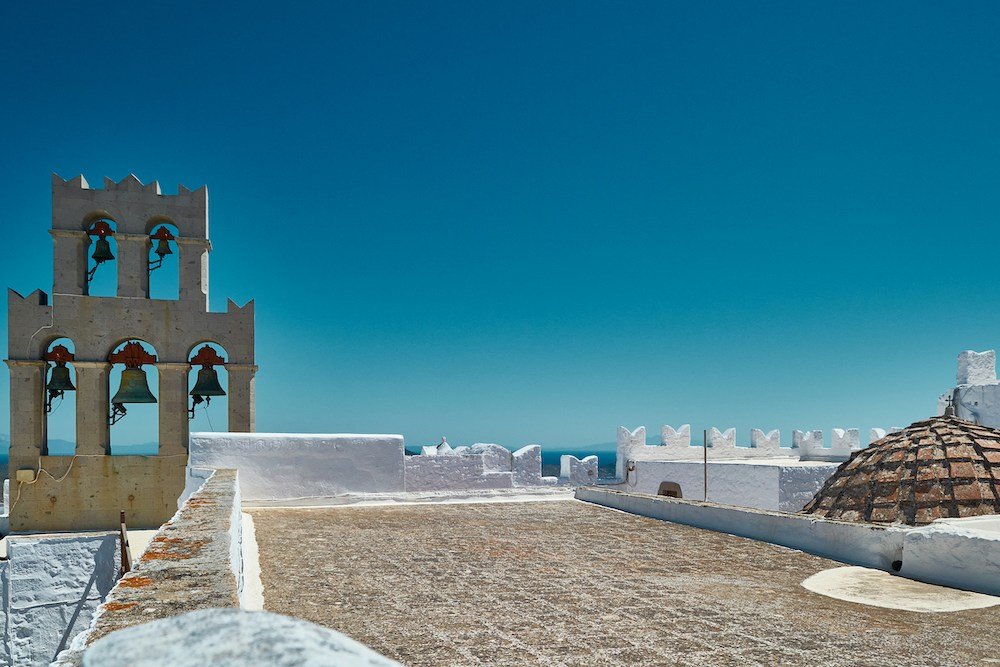
Patmos Island stands as a timeless testament to Greece’s rich historical tapestry, with roots that stretch back to ancient times.
Let’s delve into the captivating history behind this legendary island and its profound religious significance.
Patmos’ history is steeped in myth and legend, dating back to antiquity.
The island’s strategic location in the Aegean Sea made it a prized possession for various civilizations, including the Greeks, Romans, Byzantines, and Ottomans.
Throughout its storied past, Patmos served as a crossroads of cultures, commerce, and conquest, leaving behind a legacy of resilience and cultural richness.
From its early days as a haven for pirates to its role as a center of maritime trade, Patmos has witnessed the ebb and flow of empires and civilizations.
Its rugged terrain and natural harbors made it an ideal refuge for seafarers and settlers, shaping the island’s identity and character over the centuries.
One of the most enduring aspects of Patmos’ history is its deep-rooted religious significance.
According to Christian tradition, it was on Patmos that the Apostle John, exiled by the Roman authorities, received the visions recorded in the Book of Revelation, the final book of the New Testament.
The story goes that while exiled on Patmos, John experienced a series of divine revelations, which he recorded in the Book of Revelation.
His visions, conveyed in vivid imagery and symbolism, offered a glimpse into the cosmic battle between good and evil, shaping the beliefs and teachings of Christianity for centuries to come.
Central to Patmos’ religious heritage is the Cave of the Apocalypse, a sacred grotto where tradition holds that John received his divine revelations.
Today, the cave stands as a pilgrimage site and a testament to the island’s enduring spiritual legacy.
As visitors explore the hallowed grounds of Patmos, they are transported back in time to an era of faith, devotion, and divine intervention.
The island’s religious significance continues to inspire pilgrims and seekers of truth, offering a profound spiritual journey unlike any other.
2. Natural Beauty
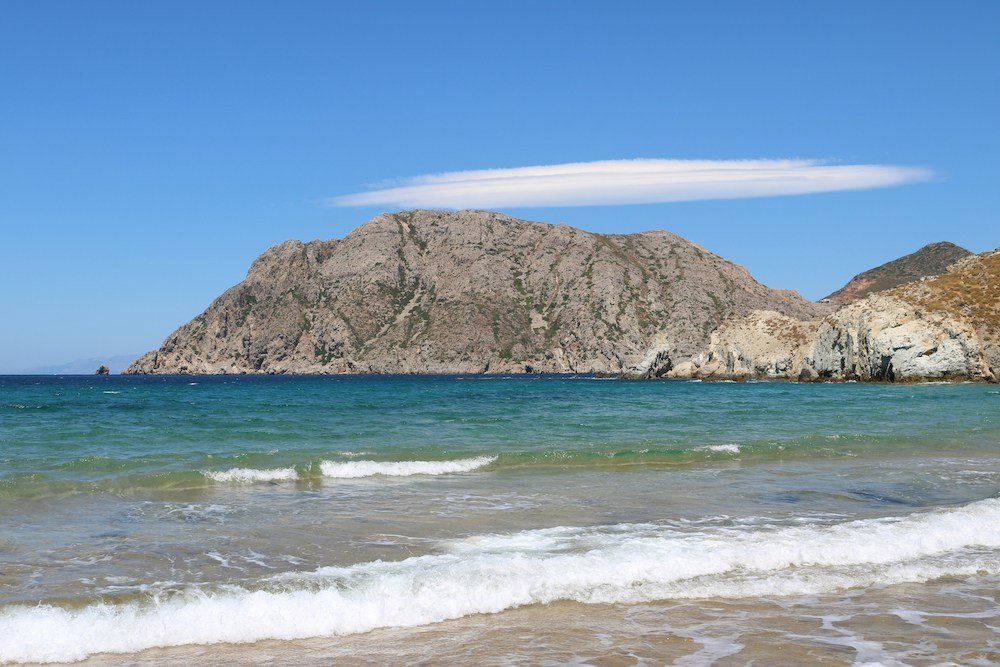
Patmos Island boasts a breathtaking tapestry of natural landscapes, where azure waters meet rugged cliffs and verdant hillsides.
From secluded beaches to panoramic viewpoints, Patmos captivates visitors with its unspoiled beauty and awe-inspiring vistas.
At first glance, Patmos’ landscapes appear like something out of a postcard, with pristine beaches, rolling hills, and dramatic cliffs stretching as far as the eye can see.
The island’s rugged terrain is punctuated by quaint villages and olive groves, creating a harmonious blend of nature and civilization.
The rugged coastline of Patmos offers an array of scenic wonders, from hidden coves to windswept cliffs that plunge into the cerulean waters below.
Each turn of the coastline reveals a new marvel, inviting travelers to explore its hidden treasures and secret sanctuaries.
Patmos’ beaches are renowned for their crystal-clear waters and pristine shores, offering a sanctuary for sun-seekers and nature enthusiasts alike.
Whether you prefer secluded bays or bustling seaside promenades, Patmos has a beach to suit every preference.
One of the island’s most iconic landmarks is the towering cliffs of Skala, which offer panoramic views of the Aegean Sea and the surrounding islands.
As the sun sets over the horizon, the cliffs come alive with hues of gold and crimson, casting a spellbinding glow over the landscape.
For those seeking solitude and serenity, the hilltop village of Chora offers a tranquil retreat amidst a backdrop of whitewashed houses and cobblestone streets.
From its vantage point, visitors can marvel at the sweeping vistas of the island below, dotted with ancient windmills and Byzantine churches.
3. Cultural Heritage
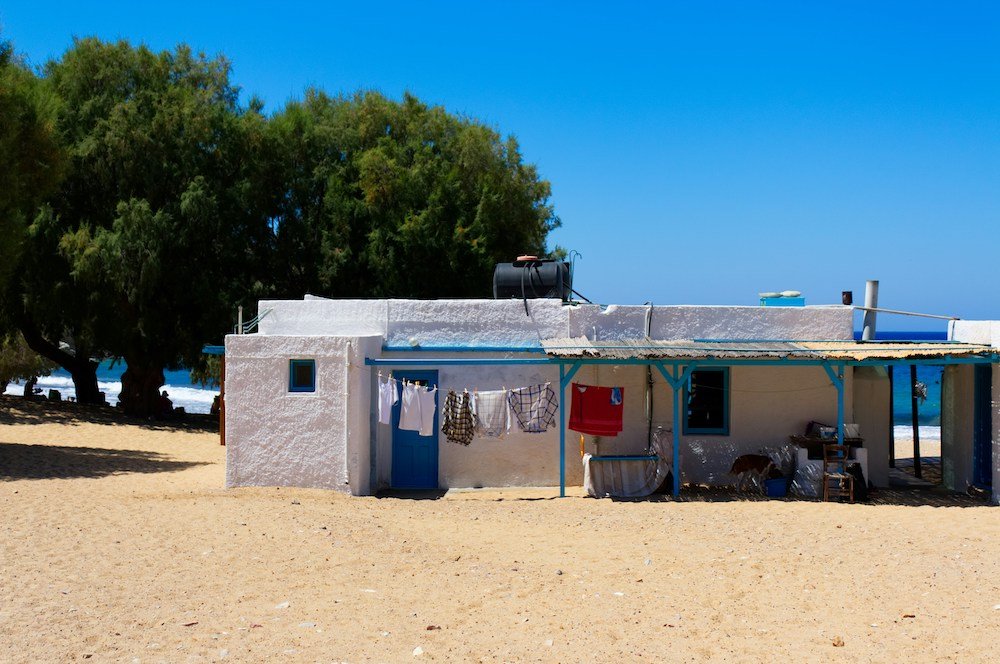
Patmos Island is not only a bastion of natural beauty but also a treasure trove of cultural heritage and historical significance.
From its ancient monasteries to its charming villages, Patmos invites visitors to embark on a journey through time and explore its rich tapestry of culture and tradition.
Steeped in millennia of history and tradition, Patmos is a living testament to Greece’s cultural legacy.
The island’s storied past is reflected in its architecture, cuisine, and customs, offering visitors a glimpse into a bygone era of maritime glory and Byzantine splendor.
Central to Patmos’ cultural heritage are its ancient monasteries, which stand as enduring symbols of faith and devotion.
The Monastery of Saint John the Theologian, perched atop a hill overlooking the island, is a masterpiece of Byzantine architecture, adorned with intricate frescoes and ornate mosaics.
Patmos’ villages are a testament to the island’s architectural heritage, with whitewashed houses, labyrinthine alleyways, and Venetian-style mansions that harken back to a bygone era.
The village of Chora, with its medieval fortress and labyrinthine streets, is a living museum of Greek architecture and urban planning.
In addition to its architectural marvels, Patmos boasts a wealth of museums and historical sites that offer insight into the island’s rich cultural tapestry.
The Patmos Maritime Museum celebrates the island’s seafaring heritage, while the Folklore Museum showcases traditional costumes, handicrafts, and artifacts dating back centuries.
As visitors wander through the narrow streets and hidden corners of Patmos, they’ll discover a wealth of historical sites and cultural landmarks waiting to be explored.
From ancient ruins to Byzantine chapels, every corner of the island tells a story of resilience, creativity, and the enduring spirit of the Greek people.
4. Spiritual and Pilgrimage Tourism
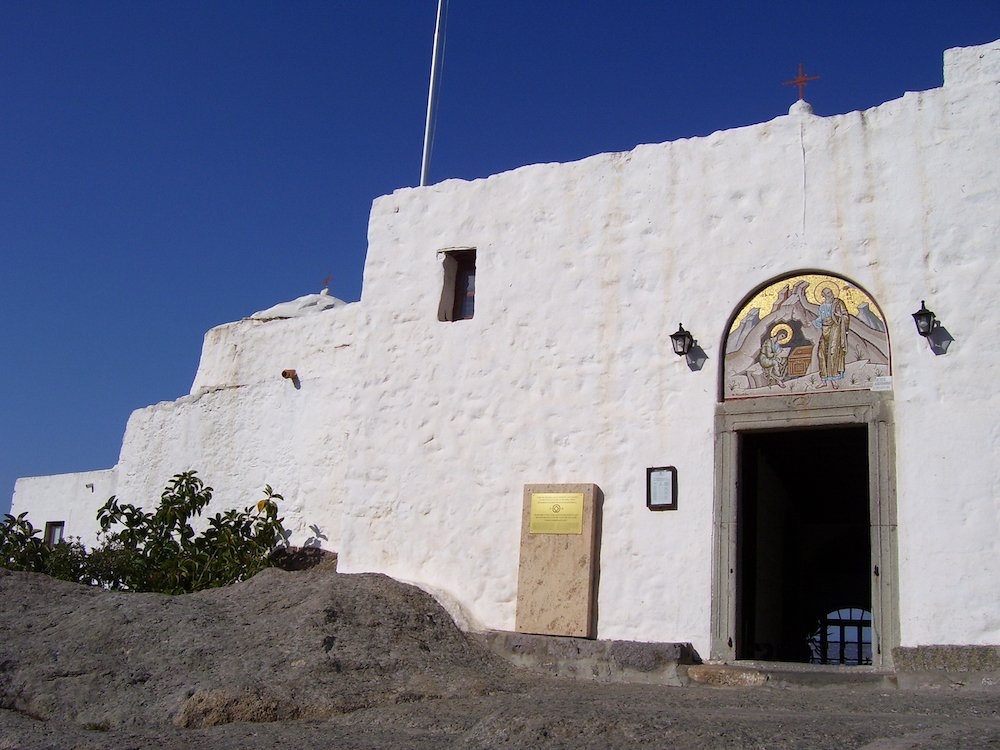
Patmos Island holds a sacred place in the hearts of pilgrims and seekers of spiritual enlightenment.
Revered as the place where the Apostle John received the divine revelations recorded in the Book of Revelation, Patmos beckons visitors on a journey of faith, reflection, and spiritual renewal.
For centuries, Patmos has been a sanctuary for pilgrims from around the world, drawn by its rich religious heritage and profound spiritual significance.
The island’s tranquil landscapes and hallowed sites offer a haven for prayer, meditation, and contemplation, inviting travelers to connect with the divine in a place of timeless beauty and serenity.
Central to Patmos’ spiritual legacy is the Cave of the Apocalypse, a sacred grotto where tradition holds that the Apostle John received his visions of the apocalypse.
Nestled amidst the rugged cliffs of the island, the cave serves as a pilgrimage site and a place of reverence for Christians worldwide.
As visitors descend into the depths of the cave, they are transported back in time to the era of St. John and the early Christian community.
The cave’s humble surroundings and flickering candlelight create an atmosphere of sanctity and reverence, inviting pilgrims to pause and reflect on the mysteries of faith and revelation.
In addition to the Cave of the Apocalypse, Patmos is home to a wealth of other religious sites and landmarks.
The Monastery of Saint John the Theologian, with its magnificent Byzantine architecture and priceless relics, stands as a beacon of Orthodox Christianity and a testament to the island’s enduring spiritual legacy.
5. Gastronomy and Local Cuisine

Embark on a culinary journey through the flavors of Patmos Island, where traditional recipes and fresh ingredients come together to create a tapestry of taste that delights the senses and nourishes the soul.
From hearty stews to freshly caught seafood, Patmos’ cuisine reflects the island’s rich culinary heritage and vibrant Mediterranean spirit.
Patmos’ cuisine is a celebration of simplicity, authenticity, and seasonal bounty, where locally sourced ingredients take center stage in every dish.
Influenced by centuries of maritime trade and cultural exchange, Patmos’ culinary tradition draws inspiration from Greek, Ottoman, and Mediterranean flavors, resulting in a diverse and flavorful gastronomic landscape.
Local Specialties and Traditional Dishes
1. Psarosoupa (Fish Soup): A staple of Patmos’ coastal cuisine, psarosoupa is a hearty fish soup made with fresh catch-of-the-day, tomatoes, onions, and aromatic herbs. Served piping hot with a squeeze of lemon, this comforting dish is a taste of the Aegean Sea in every spoonful.
2. Patmian Cheese Pie: A savory delight that’s beloved by locals and visitors alike, Patmian cheese pie is a mouthwatering combination of flaky pastry, creamy cheese, and fragrant herbs. Whether enjoyed as a snack or served as part of a leisurely meal, this traditional dish is a testament to the island’s culinary prowess.
3. Souvlaki: No visit to Patmos is complete without savoring a succulent skewer of souvlaki, grilled to perfection and served with a side of tzatziki and freshly baked pita bread. Whether prepared with tender lamb, juicy pork, or flavorful chicken, souvlaki is a beloved Greek classic that captures the essence of Mediterranean cuisine.
4. Fava: A humble yet flavorful dish that’s a favorite among locals, Patmian fava is made from yellow split peas simmered to creamy perfection and drizzled with extra virgin olive oil. Served as a dip, spread, or accompaniment to grilled meats and seafood, fava is a delicious expression of Patmos’ agricultural heritage.
5. Loukoumades: Indulge your sweet tooth with a plate of loukoumades, golden-brown spheres of fried dough drizzled with honey and sprinkled with cinnamon. Crispy on the outside and light as air on the inside, these delectable treats are a beloved dessert in Patmos and throughout Greece.
6. Authentic Greek Lifestyle
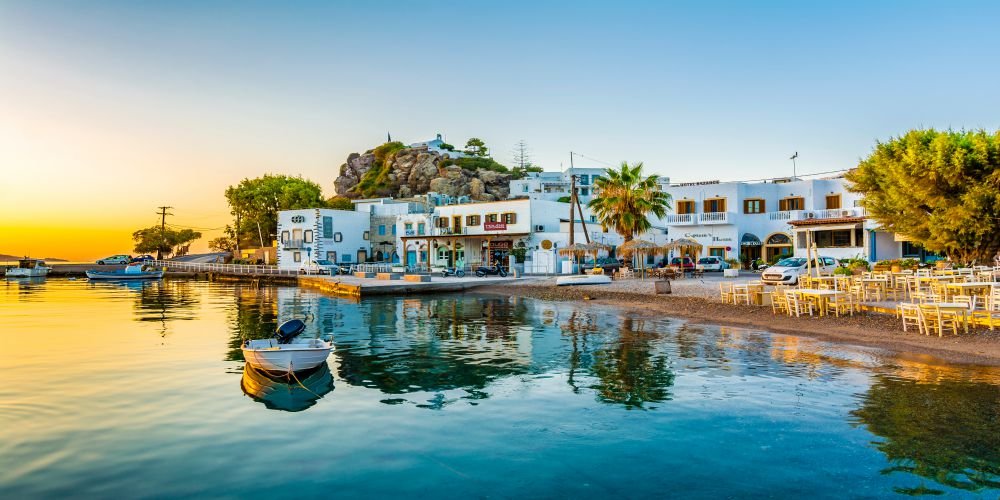
Experience the warmth, hospitality, and vibrancy of Greek island life as you immerse yourself in the timeless rhythms and traditions of Patmos.
From lively festivals to bustling markets, the island offers a glimpse into a way of life that celebrates community, culture, and the simple pleasures of island living.
Patmos’ locals, known for their warmth and hospitality, welcome visitors with open arms and generous spirits, inviting them to share in the joys and traditions of island life.
From morning strolls along the cobblestone streets to leisurely meals shared with family and friends, every moment in Patmos is infused with a sense of connection and camaraderie.
At the heart of Patmos’ authentic lifestyle are its time-honored traditions, passed down through generations and cherished by all who call the island home.
Whether celebrating religious holidays, participating in traditional dances, or gathering for communal feasts, Patmians embrace their cultural heritage with pride and reverence, creating a sense of belonging and unity that resonates throughout the island.
Throughout the year, Patmos comes alive with a vibrant tapestry of festivals, markets, and cultural events that showcase the island’s rich heritage and dynamic spirit.
From religious processions honoring saints and martyrs to lively street fairs celebrating music, dance, and local cuisine, there’s always something exciting happening on the streets of Patmos.
One of the highlights of the island’s cultural calendar is the Festival of St. John the Theologian, held annually in honor of the island’s patron saint.
The festival features religious ceremonies, traditional folk music and dance performances, and a lively procession through the streets of Chora, where locals and visitors alike come together to celebrate their shared heritage and faith.
In addition to religious festivals, Patmos’ markets offer a feast for the senses, with stalls brimming with fresh produce, artisanal crafts, and local delicacies.
Whether browsing for souvenirs or sampling authentic Greek specialties, visitors are treated to a sensory experience that captures the essence of Patmos’ vibrant culture and culinary traditions.
7. Outdoor Activities
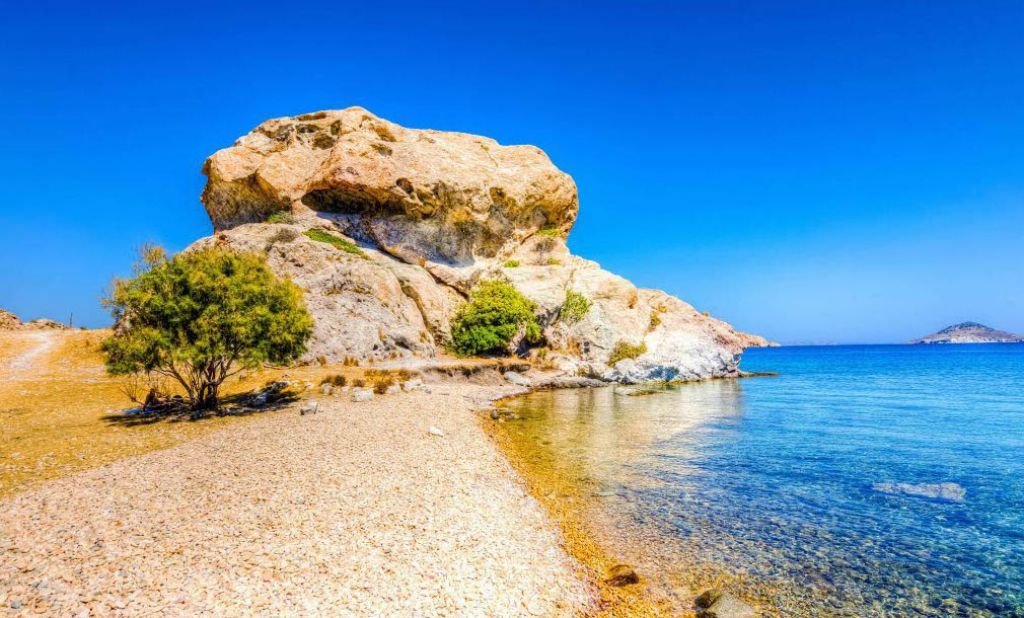
Patmos Island offers a playground of natural wonders and outdoor adventures, inviting visitors to explore its rugged landscapes, azure waters, and hidden treasures.
Whether you’re seeking adrenaline-fueled thrills or peaceful moments of solitude, Patmos offers a wealth of recreational activities to suit every taste and interest.
From sunrise to sunset, Patmos beckons outdoor enthusiasts with a diverse array of recreational pursuits that showcase the island’s natural beauty and cultural heritage.
Whether you’re wandering through ancient trails or diving into crystal-clear waters, there’s no shortage of adventures to be had on this enchanting Greek island.
Hiking, Diving, and Other Outdoor Pursuits
1. Hiking: Lace up your hiking boots and explore the island’s network of scenic trails, which wind through olive groves, pine forests, and rocky cliffs. The trails offer panoramic views of the Aegean Sea and lead to hidden gems like abandoned monasteries, secluded beaches, and ancient ruins.
2. Diving: Dive into the cerulean depths of the Aegean Sea and discover a vibrant underwater world teeming with marine life, colorful coral reefs, and ancient shipwrecks. Patmos’ crystal-clear waters offer excellent visibility and diverse dive sites for both novice and experienced divers alike.
3. Water Sports: From windsurfing to paddleboarding, Patmos’ pristine beaches provide the perfect playground for water sports enthusiasts of all ages. Whether you’re riding the waves or basking in the sun, the island’s azure waters offer endless opportunities for aquatic adventures and seaside fun.
4. Boat Tours: Embark on a boat tour and explore the hidden coves, sea caves, and uninhabited islets that dot the coastline of Patmos. From leisurely sunset cruises to thrilling speedboat rides, there’s no shortage of ways to experience the beauty and majesty of the Aegean Sea.
5. Yoga and Wellness Retreats: Reconnect with mind, body, and spirit amidst the tranquil landscapes and serene surroundings of Patmos. The island offers a variety of yoga and wellness retreats, where you can practice mindfulness, meditation, and holistic healing techniques in harmony with nature.
8. Charming Villages and Towns

Patmos Island is home to a collection of picturesque villages and towns, each offering its own unique charm, character, and timeless beauty.
From the labyrinthine streets of Chora to the idyllic fishing villages along the coastline, Patmos’ villages invite visitors to step back in time and immerse themselves in the island’s rich history and culture.
Nestled amidst rolling hills and overlooking the azure waters of the Aegean Sea, Patmos’ villages captivate visitors with their whitewashed houses, cobblestone streets, and panoramic vistas.
From the bustling port town of Skala to the hilltop enclave of Chora, each village offers a glimpse into a bygone era of maritime splendor and Byzantine grandeur.
Places of Unique Charm and Character
1. Chora: Perched atop a rocky promontory, Chora is the crown jewel of Patmos, with its medieval fortress, labyrinthine streets, and panoramic views of the island below. Wander through its narrow alleys and discover hidden chapels, traditional tavernas, and artisanal shops, where the spirit of old-world Greece comes alive.
2. Skala: Patmos’ main port town, Skala, bustles with activity and charm, with its waterfront promenade, bustling markets, and vibrant nightlife. From its colorful fishing boats to its lively tavernas, Skala offers a taste of authentic Greek island life, where tradition and modernity converge in perfect harmony.
3. Grikos: Tucked away in a tranquil bay on the southeastern coast of Patmos, Grikos exudes an air of understated elegance and natural beauty. Its sandy beaches, crystal-clear waters, and traditional whitewashed houses create a serene oasis where relaxation and rejuvenation reign supreme.
4. Kambos: A hidden gem nestled amidst olive groves and vineyards, Kambos is a peaceful retreat where time seems to stand still. Its traditional stone houses, ancient windmills, and lush gardens offer a glimpse into the island’s agricultural heritage and rural charm.
5. Sapsila: Perched on a hillside overlooking the sea, Sapsila is a tranquil village that offers breathtaking views and a sense of serenity and seclusion. Its whitewashed houses, blooming bougainvillea, and winding pathways create a postcard-perfect setting where peace and tranquility abound.
9. Tranquility and Relaxation

Escape the hustle and bustle of everyday life and immerse yourself in the tranquility and serenity of Patmos Island.
Renowned for its peaceful atmosphere and timeless beauty, Patmos offers a sanctuary where visitors can unwind, rejuvenate, and reconnect with themselves amidst the beauty of the Aegean Sea.
Patmos’ tranquil ambiance is palpable from the moment you set foot on the island, with its gentle sea breezes, azure waters, and sun-drenched landscapes creating a sense of calm and contentment.
From the quiet beaches to the hidden coves, every corner of Patmos exudes a sense of peace and serenity that soothes the soul and lifts the spirit.
Whether you’re seeking solitude on a secluded beach or tranquility in a hilltop monastery, Patmos offers a myriad of opportunities for relaxation and rejuvenation.
From sunrise yoga sessions to sunset strolls along the shoreline, the island invites visitors to slow down, unwind, and embrace the simple joys of island living.
Indulge in a leisurely meal at a seaside taverna, where the flavors of the Mediterranean come alive in every bite, or pamper yourself with a luxurious spa treatment, where ancient rituals and modern comforts merge to create a sense of balance and harmony.
10. Accessibility and Accommodation

Planning your journey to Patmos is the first step toward experiencing the magic of this enchanting Greek island.
From convenient transportation options to a variety of accommodation choices, Patmos welcomes travelers with open arms, offering a seamless and unforgettable experience from start to finish.
Information on How to Reach Patmos
Patmos is accessible by both air and sea, offering travelers multiple options for reaching the island:
- By Air: The closest airport to Patmos is located on the nearby island of Kos. From Kos, travelers can take a short flight to the island’s airport, located in the town of Kampos. Several airlines operate seasonal flights to Kos from major cities in Europe, making it easy to reach Patmos from destinations around the world.
- By Sea: Patmos is also accessible by ferry from the ports of Piraeus and Rhodes, as well as other islands in the Dodecanese archipelago. Ferries operate regularly throughout the year, with daily departures during the peak tourist season. Travelers can choose between conventional and high-speed ferries, depending on their preferences and travel schedule.
Once you arrive on Patmos, transportation options on the island include taxis, rental cars, and buses, making it easy to explore the island at your own pace.
Accommodation Options
Patmos offers a diverse range of accommodation options to suit every taste and budget, from luxurious beachfront resorts to charming boutique hotels and traditional guesthouses:
- Hotels: Patmos boasts a variety of hotels, ranging from upscale resorts with lavish amenities to family-run establishments with personalized service. Many hotels offer stunning views of the Aegean Sea and easy access to the island’s beaches, restaurants, and cultural attractions.
- Villas: For travelers seeking privacy and seclusion, Patmos offers a selection of private villas and vacation rentals, nestled amidst olive groves, vineyards, and scenic landscapes. Villas come in a range of sizes and styles, from cozy cottages to spacious estates, offering an ideal retreat for families, couples, and groups of friends.
- Guesthouses: Experience Greek hospitality at its finest by staying in one of Patmos’ charming guesthouses or pensions. Run by friendly locals, guesthouses offer cozy accommodations, home-cooked meals, and insider tips on the best places to explore and discover on the island.
11. Vibrant Nightlife and Entertainment

As the sun sets over the Aegean Sea, Patmos Island comes alive with a vibrant nightlife scene that beckons visitors to dance, mingle, and make memories beneath the stars.
From lively beach bars to chic cocktail lounges, Patmos offers a diverse array of entertainment options for night owls and social butterflies alike.
Patmos’ nightlife scene is as diverse as it is dynamic, offering something for everyone to enjoy after dark.
Whether you’re in the mood for live music, DJ sets, or laid-back vibes by the sea, Patmos’ bars, clubs, and tavernas promise an unforgettable evening of entertainment and excitement.
Bars, Clubs, and Tavernas Offering Entertainment and Socializing Opportunities
1. Tropicana Beach Bar: Located on the shores of Psili Ammos Beach, Tropicana Beach Bar is a favorite hangout spot for locals and visitors alike. With its relaxed atmosphere, stunning sea views, and eclectic playlist, Tropicana offers the perfect setting for a day of sunbathing, swimming, and socializing by the sea.
2. Pleasure Bar: Situated in the heart of Skala, Pleasure Bar is a stylish cocktail lounge that exudes sophistication and charm. From its chic decor to its innovative cocktails, Pleasure Bar offers a taste of cosmopolitan nightlife in the heart of Patmos, with live music and DJ sets adding to the ambiance.
3. Camelot Club: For those in search of late-night revelry, Camelot Club is the place to be. Located in Chora, Camelot Club is a hotspot for partygoers looking to dance the night away to the latest hits and timeless classics. With its energetic atmosphere and lively crowd, Camelot promises an unforgettable night of fun and excitement.
4. Blue Note Taverna: If you prefer a more laid-back atmosphere, head to Blue Note Taverna in Grikos Bay. With its cozy ambiance, traditional Greek cuisine, and live music performances, Blue Note Taverna offers the perfect setting for a relaxed evening of dining, drinking, and socializing with friends.
5. Scala Wine Bar: Wine enthusiasts will delight in the selection of Greek wines and gourmet delicacies at Scala Wine Bar. Located in Skala, Scala Wine Bar offers a cozy and intimate setting for wine tastings, pairings, and private events, with knowledgeable staff on hand to guide guests through the world of Greek viticulture.
12. Sustainable Tourism Practices

Patmos Island is not only a destination of unparalleled beauty and cultural richness but also a beacon of sustainable tourism practices and environmental stewardship.
Committed to preserving its natural landscapes and cultural heritage for generations to come, Patmos has implemented a variety of initiatives and programs to promote responsible tourism and protect its fragile ecosystems.
At the heart of Patmos’ approach to tourism is a deep-seated commitment to sustainability and environmental conservation.
Recognizing the importance of preserving its natural beauty and cultural heritage, the island has embraced a holistic approach to tourism that seeks to balance economic growth with environmental protection and social responsibility.
Eco-Friendly Initiatives, Conservation Efforts, and Responsible Tourism Practices Implemented on the Island
1. Sustainable Development: Patmos has prioritized sustainable development initiatives that promote economic growth while minimizing environmental impact. From renewable energy projects to eco-friendly construction practices, the island is committed to building a more sustainable future for its residents and visitors alike.
2. Waste Management: Patmos has implemented comprehensive waste management programs aimed at reducing waste generation, promoting recycling, and minimizing pollution. Visitors are encouraged to participate in beach clean-up efforts and to dispose of their waste responsibly, ensuring that the island’s pristine beaches and coastal ecosystems remain unspoiled for future generations to enjoy.
3. Conservation of Natural Habitats: Patmos is home to a variety of unique and ecologically significant habitats, including coastal dunes, wetlands, and marine ecosystems. The island has established protected areas and nature reserves to safeguard these fragile habitats and the species that call them home, while also providing opportunities for eco-friendly tourism and outdoor recreation.
4. Sustainable Agriculture: Patmos’ agricultural sector plays a vital role in the island’s economy and cultural heritage. Through sustainable farming practices and organic agriculture initiatives, Patmos is working to preserve its agricultural traditions while promoting biodiversity, soil health, and food security for future generations.
5. Community Engagement: Patmos actively engages with local communities, businesses, and stakeholders to promote sustainable tourism practices and foster a culture of environmental responsibility. Through education, outreach, and collaboration, the island seeks to empower residents and visitors alike to become stewards of the environment and champions of sustainability.
Conclusion
As we conclude our exploration of the enchanting island of Patmos, it becomes abundantly clear why this Aegean gem continues to captivate the hearts and imaginations of travelers from around the world.
From its rich history and spiritual significance to its breathtaking landscapes and vibrant culture, Patmos offers a tapestry of experiences that beckon visitors to embark on a journey of discovery and delight.
In summary, here are the 12 reasons why visiting Patmos is a truly worthwhile experience:
- Historical Significance: Explore the island’s storied past and discover its deep-rooted connections to ancient civilizations and religious traditions.
- Natural Beauty: Immerse yourself in Patmos’ stunning landscapes, from secluded beaches to dramatic cliffs and panoramic vistas.
- Cultural Heritage: Delve into Patmos’ rich cultural tapestry, with its ancient monasteries, traditional villages, and vibrant festivals.
- Spiritual and Pilgrimage Tourism: Experience the transformative power of faith and reflection as you explore the island’s sacred sites and pilgrimage routes.
- Gastronomy and Local Cuisine: Indulge your senses with the flavors of Patmos’ culinary delights, from fresh seafood to traditional Greek dishes.
- Authentic Greek Lifestyle: Embrace the warmth, hospitality, and traditions of Patmos’ locals as you immerse yourself in island life.
- Outdoor Activities: Embark on thrilling adventures and outdoor pursuits, from hiking and diving to boat tours and water sports.
- Charming Villages and Towns: Wander through Patmos’ picturesque villages and towns, each offering its own unique charm and character.
- Tranquility and Relaxation: Find peace and serenity amidst Patmos’ tranquil landscapes and serene surroundings.
- Accessibility and Accommodation: Enjoy seamless travel arrangements and a variety of accommodation options to suit every taste and budget.
- Vibrant Nightlife and Entertainment: Experience the island’s vibrant nightlife scene, with its bars, clubs, and tavernas offering endless opportunities for socializing and fun.
- Sustainable Tourism Practices: Support Patmos’ commitment to sustainability and environmental stewardship by participating in eco-friendly initiatives and responsible tourism practices.
We encourage you to plan your trip to Patmos and experience the island’s beauty firsthand.
Whether you seek spiritual enlightenment, outdoor adventures, or simply a peaceful retreat from the world, Patmos offers a sanctuary where dreams become reality and memories last a lifetime.
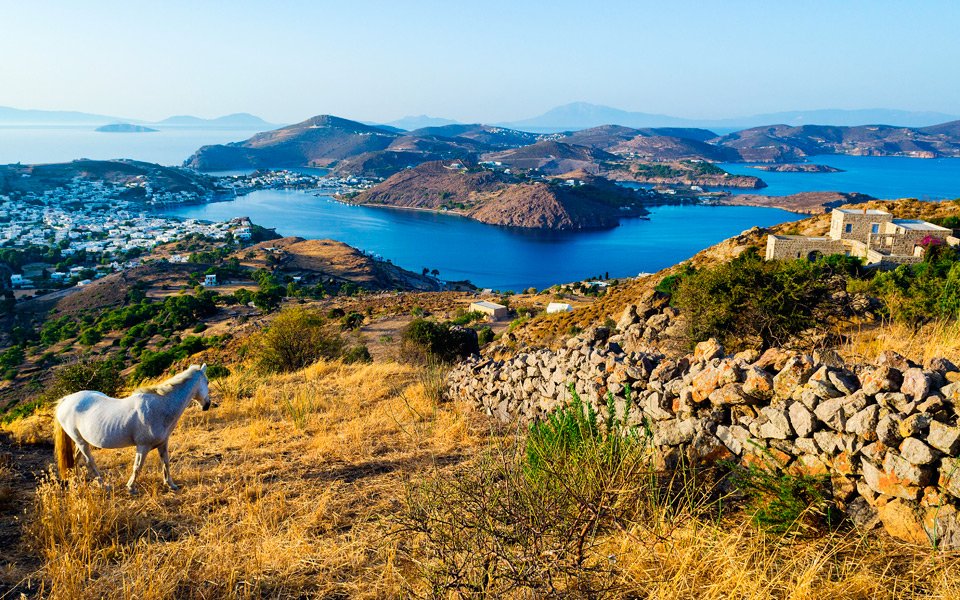
FAQ’s About the Island of Patmos:
Does anyone live on the island of Patmos today?
Yes, Patmos is inhabited year-round, with a population of around 3,000 people.
The island has local residents who live and work there, along with seasonal residents and tourists.
What is the island of Patmos called today?
The island of Patmos is still known as Patmos today. It has retained its name throughout history.
Is Patmos part of Greece or Turkey?
Patmos is part of Greece.
It belongs to the Dodecanese group of islands in the southeastern Aegean Sea and is administered by Greece.
Why was John put on the island of Patmos?
According to tradition, the Apostle John was exiled to the island of Patmos by the Roman authorities for his Christian beliefs and teachings.
It was during his exile that he is believed to have received the visions recorded in the Book of Revelation.
Can you stay on Patmos?
Yes, visitors can stay on Patmos.
The island offers a range of accommodation options, including hotels, villas, guesthouses, and rental properties, to accommodate tourists and travelers.
What celebrities are on Patmos?
Patmos has been a destination for various celebrities seeking privacy and relaxation.
However, information about specific celebrities on the island at any given time may not always be readily available due to privacy concerns.
Are there cars on Patmos?
Yes, there are cars on Patmos.
The island has roads and vehicles for transportation, including cars, motorcycles, and taxis. However, due to its traditional and narrow streets, some areas may not be accessible by car.
What is the dress code for Patmos?
Patmos, like many Greek islands, has a relaxed and casual atmosphere.
Visitors typically dress comfortably for the weather, with light clothing suitable for warm temperatures.
In some religious sites, modest attire may be required out of respect.
What is special about Patmos?
Patmos is known for its rich history, spiritual significance, and natural beauty.
It is home to the Cave of the Apocalypse, where tradition holds that the Apostle John received his visions, and the Monastery of Saint John the Theologian, a UNESCO World Heritage Site.
Patmos also offers stunning landscapes, picturesque villages, and a peaceful atmosphere that attracts visitors seeking spiritual reflection, cultural exploration, and relaxation.
